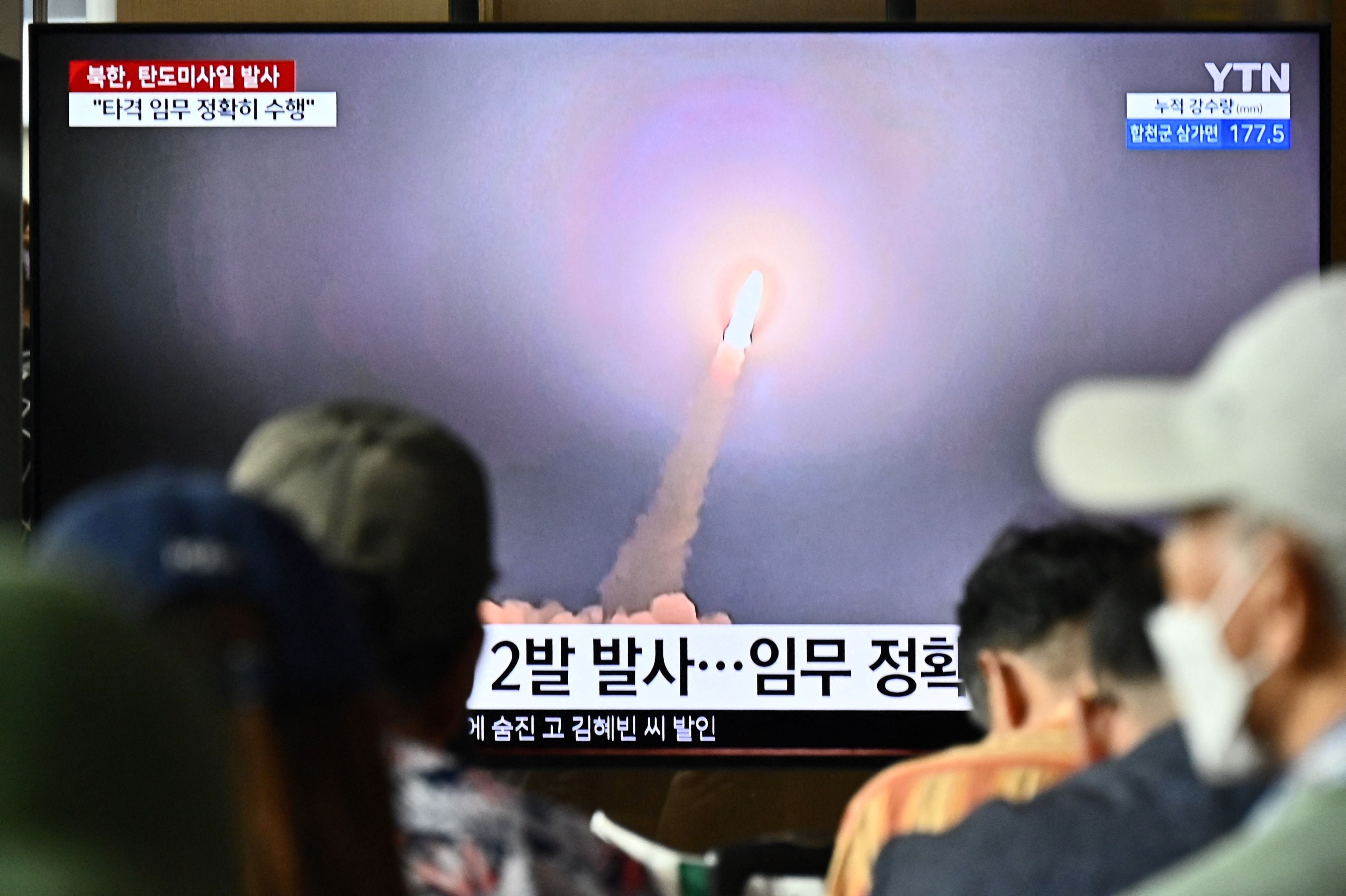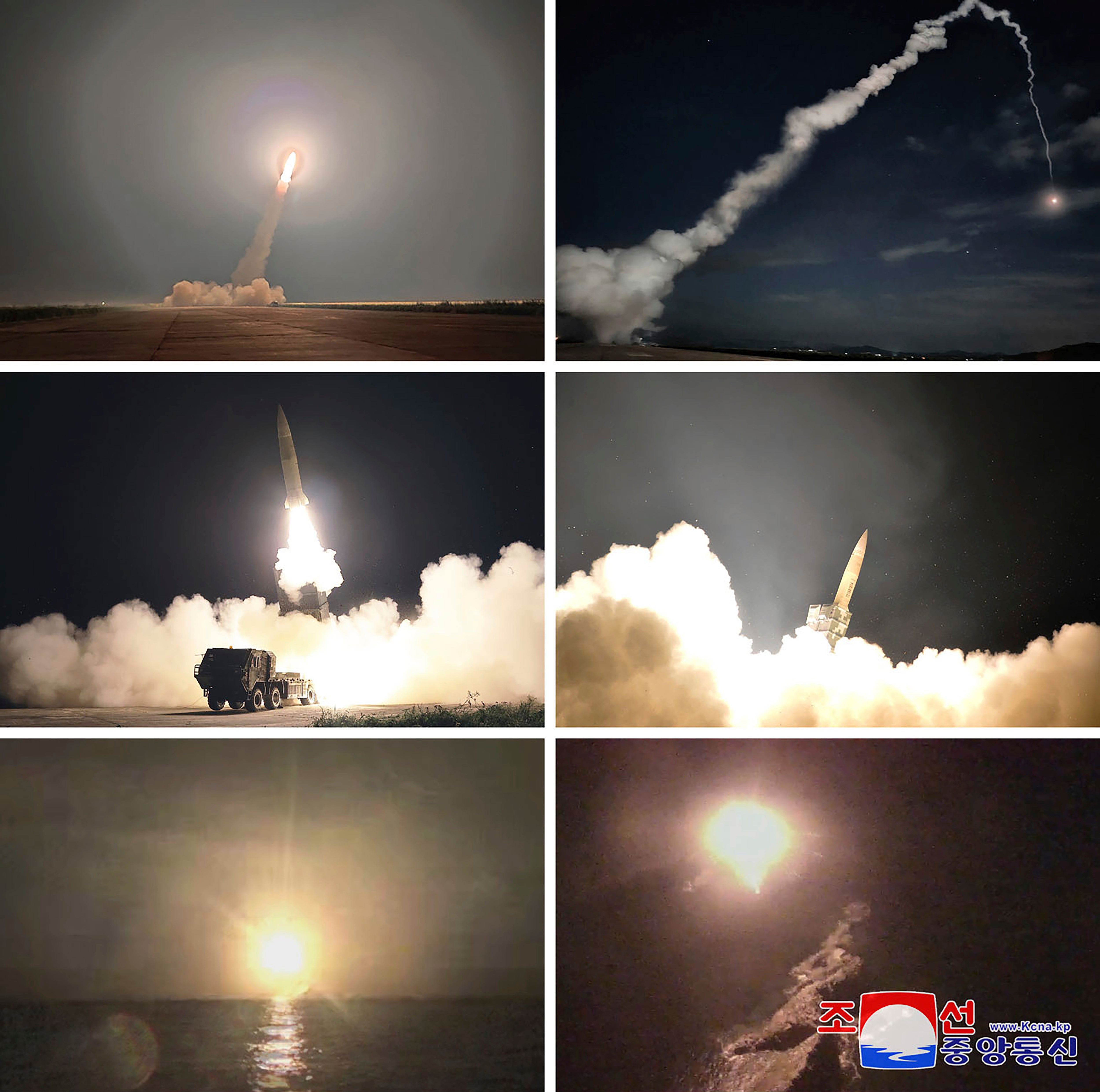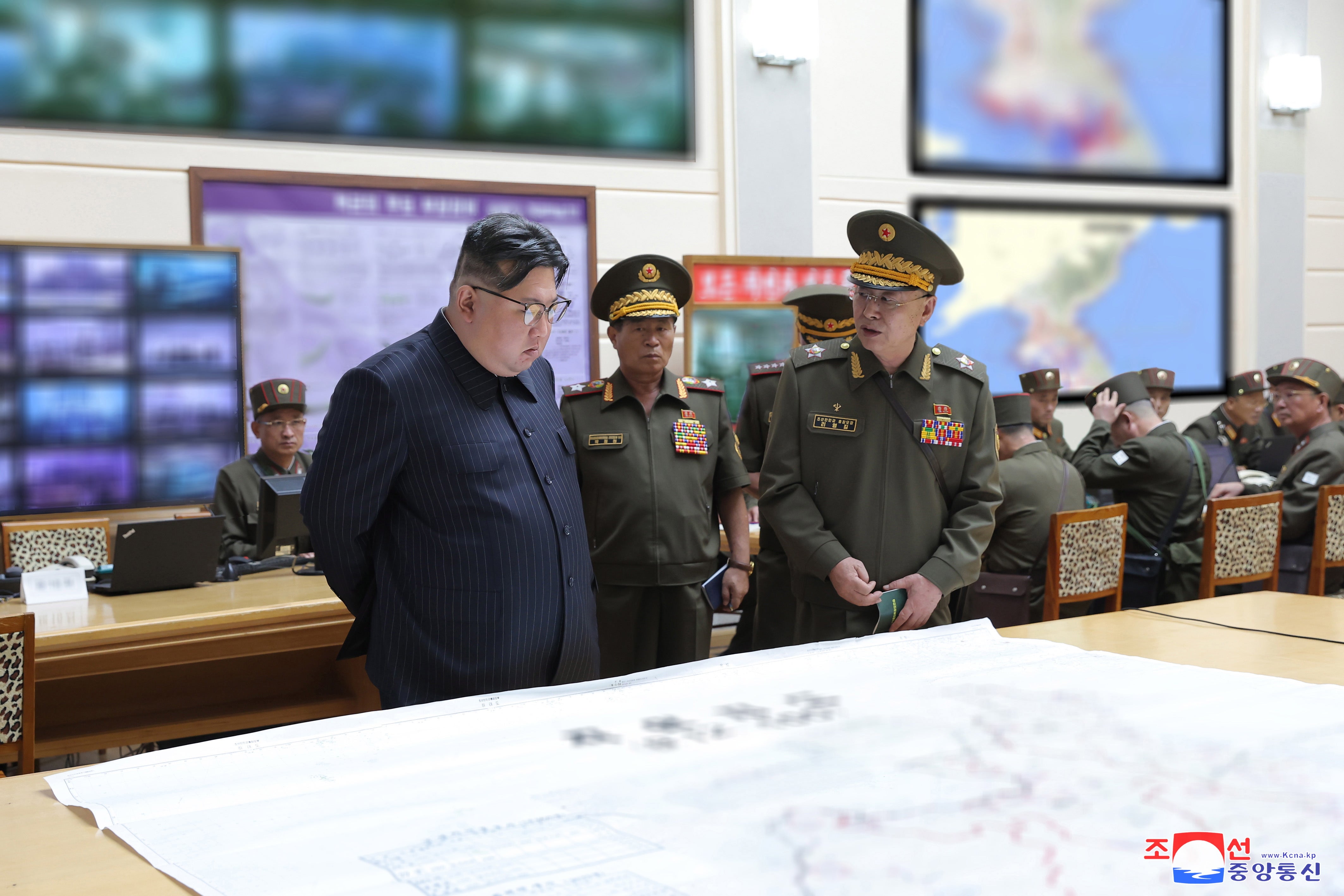North Korea simulates ‘scorched earth’ nuclear strikes on South Korea
Country also threatens ‘military gangsters’ as US undertakes defence exercises with its regional ally

North Korea has declared carrying out simulated “scorched earth” nuclear strikes on South Korea’s critical military structures.
Dummy warheads at a set altitude were exploded by tactical ballistic missiles late on Wednesday, confirming the simulated strikes happened through air bursts, said the North Korean military, known as the General Staff of the Korean People’s Army.
A day later, North Korea threatened the West against “rash acts of the US and its military gangsters”.
The missiles were fired from capital Pyongyang for practising strikes at its neighbours’ major command centres and operational airfields, according to the state-run mouthpiece Korean Central News Agency.
“Two tactical ballistic missiles launched at the Pyongyang International Airport into the northeastern direction were exploded at the fixed height of 400 metres in the air above the target island, correctly carrying out the nuclear striking task,” read the statement by the military.
Officials in South Korea and Japan confirmed the night test launch and said the short-range missiles travelled for 360-400km (225-250 miles) at the maximum altitude of 50km (30 miles) before splashing in the waters between the Korean peninsula and Japan.
North Korea said the latest missile launches were carried out after the “US imperialists sent the formation of the strategic nuclear bomber ‘B-1B’ to the sky over the Korean East and West Seas” and staged a military drill for attacking North Korea.
“The Korean Peoples’ Army will never overlook the rash acts of the US forces and the ‘military gangsters’ of the Republic of Korea,” it said, addressing South Korea by its official name.
The missile launches from Wednesday become the latest in a flurry of nuclear weapons tests by the North since last year. They come right after authorities of Western allies South Korea and Japan deployed warplanes in combined aerial drills with US B-1B bombers.

The deployment is the 10th such flyover by US bombers on the Korean peninsula this year, South Korea’s defence ministry said. The US also has nearly 28,000 deployed troops in South Korea.
The Joint Chiefs of Staff in South Korea dubbed the simulation a “grave provocation” threatening international peace and violative of a UN security council resolution that bans ballistic launches by North Korea.
Additionally, the US Indo-Pacific Command said Washington’s commitment to the defence of its Asian allies remains “ironclad”.
The Kim Jong-un regime has been steadily testing nuclear-capable missiles and often boasted about their use in potential wars with South Korea and the US. It accuses its rivals of formulating invasion plans without showing any evidence.
Earlier this year, the North disclosed detailed war plans and reaffirmed an aggressive nuclear stance to warn its opponents over the growing escalation of tension in the region.

North Korea has particularly objected to the B-1B bomber warplanes, which it calls “nuclear strategic”, but that actually can carry a huge number of conventional weapons.
Earlier this week, Mr Kim visited an army post where the country’s troops are holding command post drills in response to the South Korea-US military training.
He pushed on the need to “deal a heavy blow at the enemy’s war potential and war command centre and blinding their means of command communication at the initial stage of operation”.
The drills, Pyongyang said, are aimed at practising procedures for “occupying the whole territory of the southern half” of the Korean Peninsula in the event of war.
Mr Kim has been visibly bolstering his country’s efforts to expand and modernise its weapons arsenals. A second attempt at launching a spy satellite failed last week, but the North plans a third attempt in October.
He would eventually want to use enlarged weapons arsenals to force the US to make concessions whenever the sparring sides decide to go back to the negotiating table.
Join our commenting forum
Join thought-provoking conversations, follow other Independent readers and see their replies
Comments




Bookmark popover
Removed from bookmarks